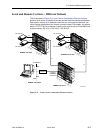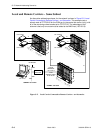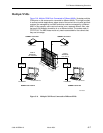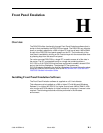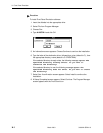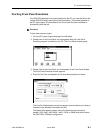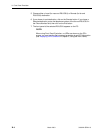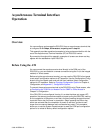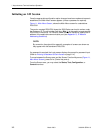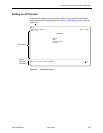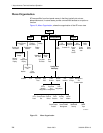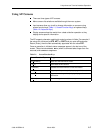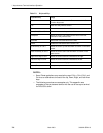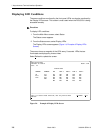
3160-A2-GB24-10 March 2001
I-1
I
Asynchronous Terminal Interface
Operation
Overview
You can configure and manage the DSU/CSU from an asynchronous terminal that
is configured for
9.6 kbps, 8 characters, no parity, and 1 stop bit
.
This appendix provides operational examples to help you become familiar with the
use of the Asynchronous Terminal Interface (ATI) for DSU/CSU control.
By convention throughout this appendix, examples of screens are shown as they
appear with the standalone 4-port DSU/CSU.
Before Using the ATI
You can connect the asynchronous terminal directly to the COM port of the
DSU/CSU, or you can establish a remote connection using dial-in (via the integral
modem) or Telnet access.
Before using the asynchronous terminal, you may use the DSU/CSU’s front panel
to set certain configuration options for ATI operation. Use the Configuration (Cnfig)
branch of the front panel menu and edit the User Interface (User) configuration
options for ATI operation. Refer to
Changing Configuration Options
in Chapter 4,
Configuration
, and Appendix C,
Configuration Options
.
To connect the asynchronous terminal to the DSU/CSU using Telnet access, refer
to
Configuring the COM Port or Modem Port for SNMP or Telnet Access
in
Chapter 4,
Configuration
.
If the DSU/CSU is misconfigured, leaving it in a state that does not support ATI
operation, the recovery procedure consists of power cycling the DSU/CSU, waiting
for the completion of the power-on self-test, and then pressing the asynchronous
terminal’s Return key five times in succession. (Begin pressing the Return key
within two seconds after the completion of power-on self-test, and do not wait
longer than one second between each successive key press.) This procedure
allows you to use the System Paused screen to reset the COM port configuration
options or to reload all factory default configuration options.



